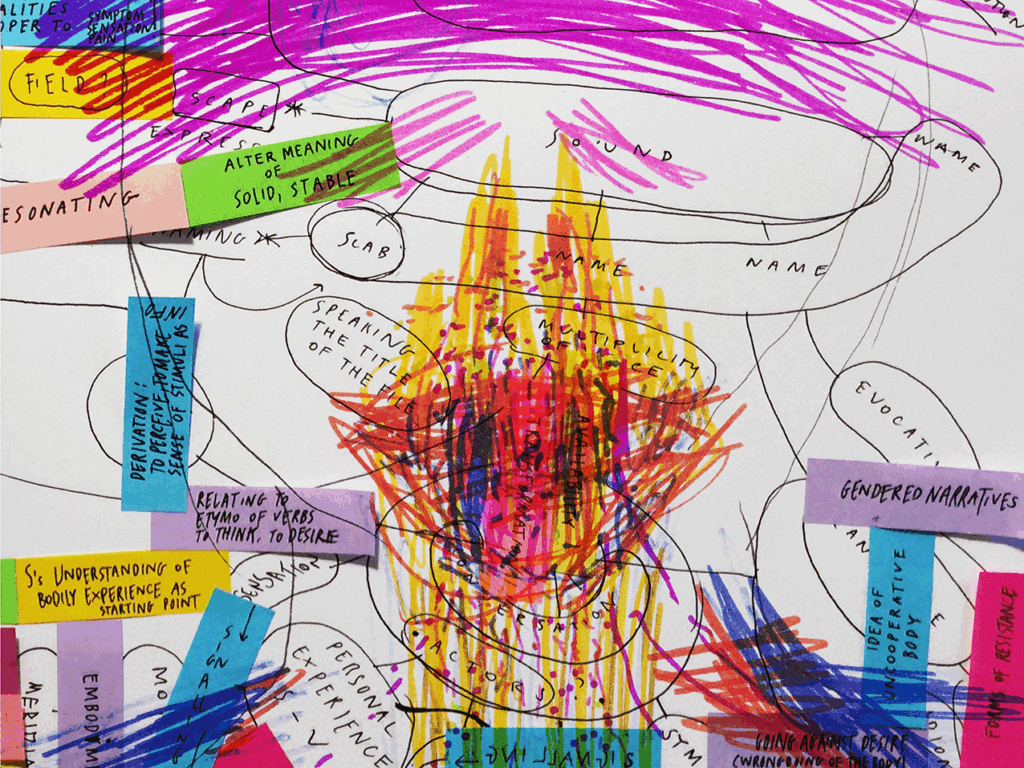Correspondences: A Bodcast on Bodily Sensing Delivered in Voice Packets, 2020
4 voice packets, each ca. 15min
In collaboration with Savannah Theis, curated by Ines Marita Schärer
A series of voice packets unfolds the theoretical and experiential proposition of organ speech and sensibility, referring to the vital capability and attribute of biological organs, tissues, guts and recesses to utter and communicate affects and emotional conditions.

In the voice packets, two female voices use raw sounds to channel and map bodily sensations.
By sensing inner movements, sensations and symptoms are listened to, that are reinterpreted by the voices in the emerging qualities of signals. They further articulate discourses on the body, thinking through and challenging ableist notions of its ‘sound state’ as societally proper and healthy.
Each packet navigates a different topic among which: body compass; bodily sounds; organ speech; symptoms and sensation; ‘sound states’; patient and therapist canon; belief systems; conflict bodies; public feelings; pleasure and dream figures. In theeffort of embracing a shared body of sound, correspondences are found in the voices aiming to reveal patterns for subjectiveshared modes of existence.
The experiments and the literary references exposed in the packets intend to cast a light on the psychosomatic nature of the body as a continuum of relations and interdependences. They borrow from the research and the writings of authors such as Elizabeth Wilson’s ‘Gut Feminism’, Ann Cvetkovich’s ‘Public Feeling’, and adrienne maree brown’s ‘Pleasure Activism’.
The principles from the therapeutic-activist paradigm of ‘process work’ guide this project.
It was applied in the first stage of the collaboration, in which Curandi and Theis exchanged brief audios as a way of journaling their personal sensing activity and of responding to each other’s strategies of bodily utterance. The voice packets created in post-production edit the exchange and aim to function as archives of bodily signals, exposing telling strategies, and as a practice addressing potential new experimenters.
Voice packet #1 (12m47) unfolds the technique of imagining bodies as compasses oriented towards the inner sensations but also capable to orient and connect into shared sensorial experiences.
Voice packet #2 (16min43) brings into dialogue the willful utterances performed by bodies and challenges the notion of a ‘sound state’ by inquiring the pathologies of a resounding body of signals, and sensations.
Voice packet #3 (13min50) rotates around the interrelations of inside-outside, the role of the therapist and the condition of the patient, and the dynamic movements of (un)doing embodied in these positions.
Voice packet #4 (12min18) attends to a broadened conception of dreaming intended as an unconscious activity of sleeping an awaken life as well, that reveals symptoms and offers figurations for intervening in patterns of relationality.